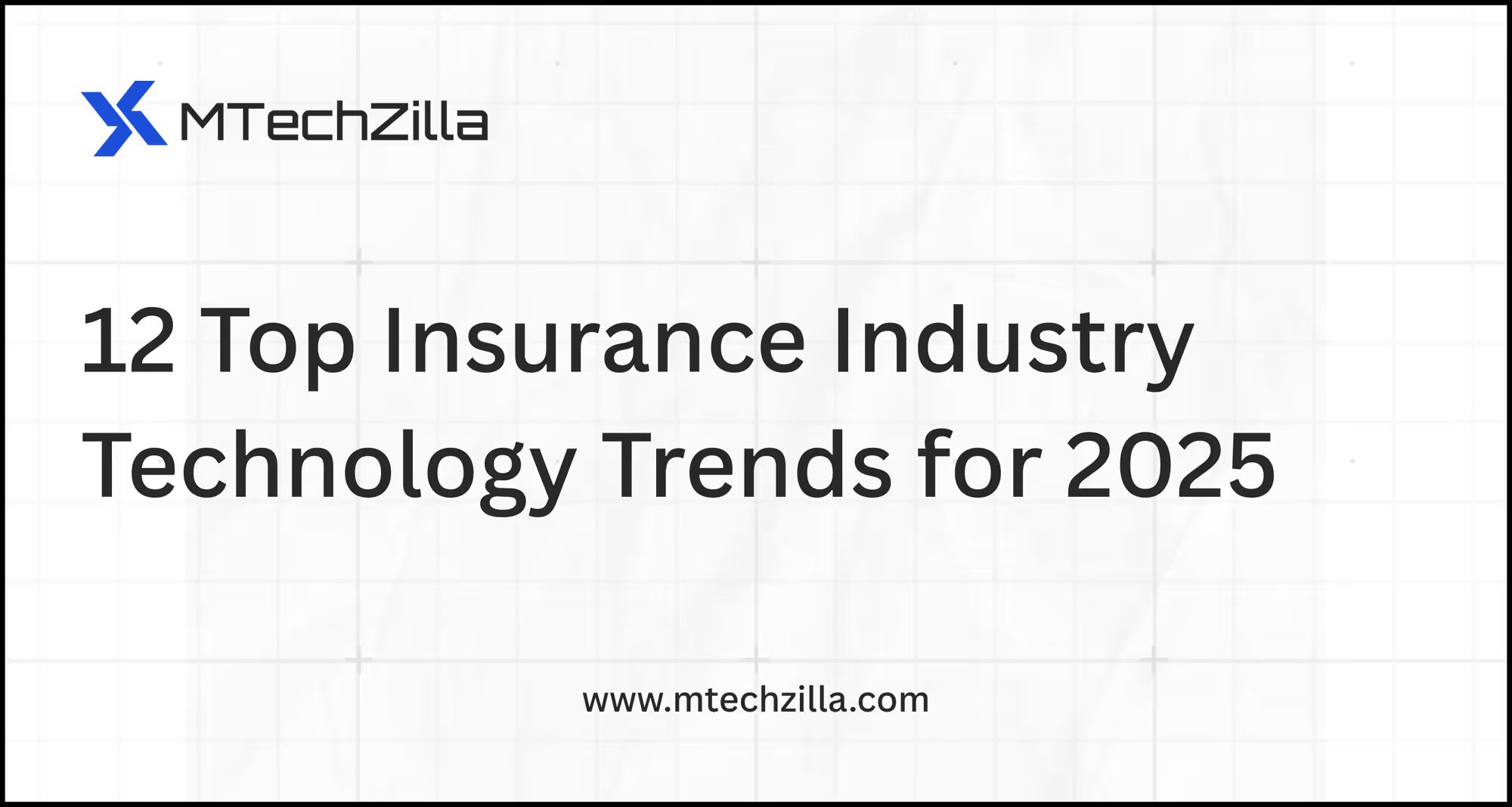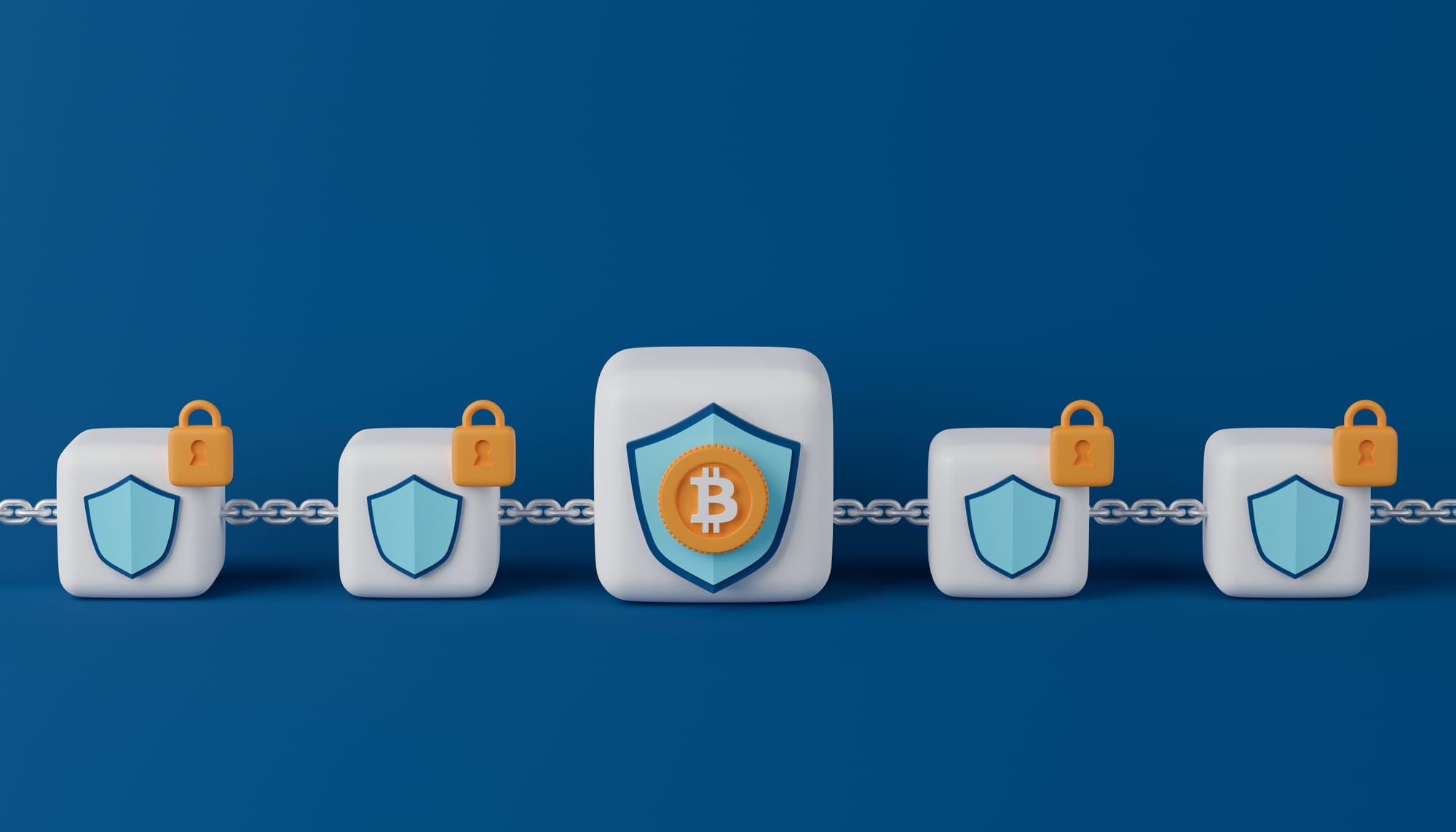August 5, 2025
10 min read

The insurance industry is going through one of the biggest transformations in years. Today’s policyholders expect quick quotes, smooth claims processing, personalized offers, and support that feels reliable and human, even when powered by AI. This shift isn’t happening in the future; it’s already here.
That’s why we reviewed multiple industry reports, including McKinsey’s latest research on AI in insurance, to understand what’s really changing. The findings make one thing clear: technology, especially AI, is setting new standards for both insurers and customers.
So not only AI, but the 12 insurance industry technology trends below will make 2025 a turning point for how insurers operate and how customers experience insurance.
For a long time, the insurance industry was slow to adopt technology. Most processes were manual, paper heavy, and built on legacy systems. Early digital efforts like customer portals or call center automation made small improvements, but they did not change the core way insurers worked.
That picture looks very different today. With cloud platforms, mobile apps, data analytics, and AI development, technology has become central to how insurers operate. In 2025, it is not just supporting the industry but actively reshaping it.
Here is how the shift is happening:
Now we will look at each Insurance Industry Technology Trend in detail and how it is impacting the industry.
The trends we have included here are not just guesses. They are based on recent industry reports, ongoing research, and real changes that are already visible in global insurance markets.
A big part of this shift is being fueled by InsurTech innovations, where startups and traditional insurers are working together to bring smarter, digital‑first solutions. Let’s have a look at the 12 key insurance industry technology trends that are set to shape 2025.

Artificial Intelligence has moved from being a “future technology” to becoming a core part of the insurance industry in 2025. You are already seeing AI everywhere, from customer service chatbots to underwriting, claims automation, fraud detection, and even creating personalised policy recommendations.
A McKinsey report highlights that domain-level AI adoption has led to a 10–20% improvement in new-agent success rates and sales conversion, 10–15% growth in premiums, 20–40% lower onboarding costs, and 3–5% better claims accuracy.
How AI is impacting the insurance industry:
Key Takeaways
If you are an insurer, AI is no longer optional. It helps you cut costs, improve accuracy, and deliver faster services that your customers now expect. Generative AI in particular is opening up new possibilities by not just automating tasks but supporting employees with smarter, decision‑driven tools.
You already know AI is making insurance smarter. But in 2025 it is not only about automation. The real shift is happening with Generative AI and Natural Language Processing, often called NLP. These two are changing the way insurers work with information and how they interact with you.
Generative AI is like a tool that can write and create. It can draft policy documents, prepare claim letters, or even reply to your questions in seconds. NLP is like a reader that understands text. It can go through medical records, claim forms, or long reports and highlight exactly what matters.
How Generative AI and NLP are shaping insurance industry:
Key Takeaways
For you this means faster claims, fewer delays, and clearer communication. No more waiting for paperwork to be processed or getting stuck with confusing jargon. Insurers can now talk to you in a way that feels natural, quick, and personal.
Insurance has always relied on data, but in 2025 it is becoming far more advanced. With new analytics tools, insurers can understand your behavior, lifestyle, and environment to design policies that actually match your needs.
Predictive models powered by machine learning help forecast risks more accurately, from climate events to health conditions. This improves pricing and allows insurers to build flexible products that reward safe and healthy choices.
How advanced data analytics is shaping the insurance industry:
Key Takeaways
For you, advanced data analytics means insurance that feels fair and personal. Your policy matches your real lifestyle and choices, helps you save money when you stay safe, and keeps your coverage relevant as your needs change.
InsurTech is one of the biggest shifts in the insurance sector in 2025. Startups in this space are redesigning traditional models with digital first, customer friendly solutions. From mobile only platforms to flexible policies tailored for modern lifestyles, these innovations are pushing the industry to move faster and deliver better experiences.
If you want a detailed explanation of what InsurTech is and how it impacts the insurance industry, you can read this overview on InsurTech and its impact from Investopedia.
How InsurTech is impacting the insurance industry:
Key Takeaways
InsurTech is not just about startups competing with big insurers. It is about collaboration. If you are part of a traditional insurance company, you can partner with InsurTechs to adopt new models, reach untapped markets, and keep up with customer expectations in a digital‑first world.

Blockchain may have started with cryptocurrencies, but in 2025 it is becoming a powerful tool for insurance.
If you are new to blockchain in insurance, think of it as a digital logbook. Every policy, claim, or payment is added as a block in the chain, and once it’s there, it can’t be changed. This gives you records that are always secure, verified, and up to date.
How blockchain is impacting the insurance industry:
Key Takeaways
Blockchain can track a policy from underwriting to claims in one shared system. Fake claims are easier to catch as every detail is verified on the chain. Reinsurance contracts can be settled in minutes instead of weeks, and instead of chasing paperwork, everyone works with one secure, real-time record.
Smart contracts are powered by blockchain, but they deserve their own spotlight. At the simplest level, a smart contract is a digital agreement that runs on blockchain and executes automatically once certain conditions are met. No middlemen, no waiting, no extra paperwork.
How smart contracts are impacting the insurance industry:
Key Takeaways
For you as an insurer, smart contracts save time and cut costs by removing repetitive claim checks and paperwork. They make payouts automatic and transparent, which builds customer trust. They are especially useful in areas like travel, weather, or event insurance where claims are simple and data driven.
The best part is that you avoid disputes and delays because everything is agreed and coded upfront.
Connected devices are everywhere, from smart home systems to fitness trackers, and in 2025 insurers are using IoT data not just to react to claims but to prevent them.
IoT devices continuously collect and share real time data. For insurers, this means risks can be monitored as they happen. This data helps design policies, set fairer premiums, and even alert customers before a problem occurs.
How IoT is impacting the insurance industry:

Key Takeaways
For you, IoT makes insurance proactive instead of reactive. It helps predict risks better, reduces claim volumes, and creates new ways to engage customers with personalised offers and rewards. Most importantly, IoT positions you as a partner in prevention, not just a payer after damage has already occurred.
Traditional insurance waits for an adjuster to verify losses. In 2025, parametric insurance platforms are using technology to change that.
These solutions connect to weather data, IoT sensors, and satellite feeds, and trigger payouts automatically when predefined conditions are met, such as a crop field facing drought or a flight being delayed.
How parametric insurance platforms are shaping insurance:
Key Takeaways
Parametric insurance means faster payouts, less hassle, and greater reliability. Instead of fighting over claims, the technology makes sure you get compensated as soon as the trigger happens.
Imagine buying a flight ticket and automatically having travel insurance included, or purchasing a phone and instantly getting screen damage protection. That is what embedded insurance is all about.
In 2025 it is becoming a major trend because it brings insurance directly into the services and products you already use. This is possible because of technology platforms that allow insurers to integrate with e-commerce, banking apps, and even car rental services.
How embedded insurance is shaping insurance industry:
Key Takeaways
For you, embedded insurance means protection that fits seamlessly into your daily life. You do not need to search for policies separately. Coverage becomes available exactly when you need it, whether you are traveling, shopping, or using an online service.
If you look at how insurers used to work, most of them were stuck with old, bulky systems that were slow to update. In 2025 things are moving fast toward cloud native platforms and open API ecosystems.
Cloud platforms let insurers run systems that scale quickly and update in real time. APIs act like digital bridges, connecting insurers with apps and services you already use, from payment apps to health trackers to car telematics.
How cloud native platforms and APIs are shaping insurance industry:
Key Takeaways
For you this means more convenience, quicker service, and personalized products. You can access insurance exactly when and where you need it, often without even leaving the apps you use every day.

As insurers digitise everything from claims to customer data, cybersecurity has become a top priority.
In 2025, insurers are using advanced monitoring tools, AI powered threat detection, and zero trust architectures. They are also offering cyber insurance products that use real time risk assessment to protect both businesses and individuals.
How cybersecurity technology is shaping insurance industry:
Key Takeaways
This means safer digital interactions with your insurer and stronger protection against cyber risks. From securing your data to covering online attacks, technology is helping insurance stay ahead in a digital‑first world.
If you have ever felt frustrated waiting for claims to be processed or forms to be updated, you will be happy to know that automation is changing this in 2025. Insurance companies are now using automation and RPA to take care of routine tasks like entering claim details, checking documents, and updating records.
How automation and RPA are shaping the insurance industry:
Key Takeaways
Instead of waiting weeks for paperwork, you get answers and results much faster. It is insurance that works quietly in the background, so you can focus on what matters most.
So there you have it, 12 technology trends that are reshaping the insurance industry in 2025.
What comes next is clear: more personalisation, more speed, and more trust built through technology. Insurers that embrace these tools will stay ahead, and customers like you will notice the difference in every interaction.
At MTechZilla, we have been working with the insurance industry for over five years, building custom software solutions that solve challenges. From AI and automation tools to analytics dashboards, claims management systems, customer portals, and mobile apps, we help insurers modernize and grow. If you ever need a partner to bring these ideas to life, that is exactly where MTechZilla can help.


Share your product idea and challenges

Discuss possible approaches and solutions

Define a roadmap for your project